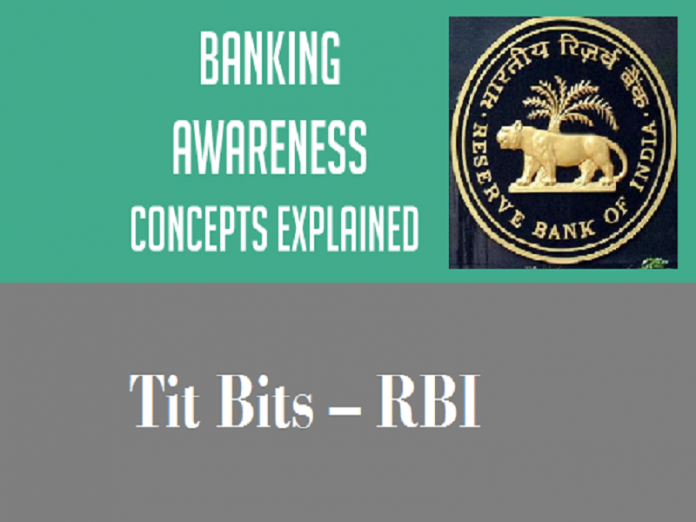Dear Friends,
We team Sehpaathi got to know that many of our visitors find too much trouble while preparing for the the Financial Banking Awareness Section whenever appeared for any banking exams.So, we took an initiative to come up with our new concept i.e. Tit Bits in which we will cover a topic by providing you all necessary details.So let us try to understand the basics related to the topic – Reserve Bank of India (RBI).
- RBI Establishment – 1st April,1935 under RBI Act 1934
- Central bank of India and nationalized w.e.f. 1st January 1949
- RBI’s Central Office – Mumbai
- Based on the recommendations of John Hilton Young Commissions 1926 , also known as Royal commission on Indian currency and Finance
- RBI is a bank but not perform the function of accepting deposits from the general public
- RBI decides the following rates – Bank rate, Repo rate, Reverse Repo rate and cash reserve ratio
- The quantitative instruments of RBI are – Bank rate policy, cash reserve ratio and Statutory liquidity ratio
- The quality of coins to be minted is decided by Government of India not RBI
- Minimum Reserve system method is used currently in India to issue currency note
Functions of RBI:
- Issuance of Currency: RBI is the authority in India to issue currency notes (called bank notes) under signatures of Governor.
Rs.1 – signed by Finance secretary & issued by Central govt.
- Banker to Government: RBI transacts govt. business and manages public debt. SBI or any other bank is appointed agent where RBI does not have office.
- Controller of Banks and Credits: An entity which is to conduct banking business in India has to obtain license from RBI.RBI can fix interest rates and exercise selective credit controls.
- Banker’s Bank: RBI keeps a part of deposits of commercial banks as CRR and acts as lender of last resort by providing financial assistance to banks. It provides export credit refinance, Liquidity Adjustment Facility and Marginal Standing Facility.
- Maintenance of External value: RBI is responsible also for maintaining external value of Indian currency as well as the internal value. Foreign exchange reserves are held by RBI and it has a wide power to regulate foreign exchange transactions under Foreign Exchange Management Act (FEMA)
Banking Regulation Act 1949
- Passed as the Banking Companies act 1949 but came into force w.e.f. 16th March 1949 and changed to Banking regulation act 1949 w.e.f. 1st March 1966,it was made applicable to Jammu & Kashmir and now applicable throughout India.
- The act is not applicable to primary agricultural credit societies, cooperative land mortgage and non-agricultural primary credit societies.
You can also download the above Article in PDF Format
Financial Banking Awareness Tit Bits – RBI





















